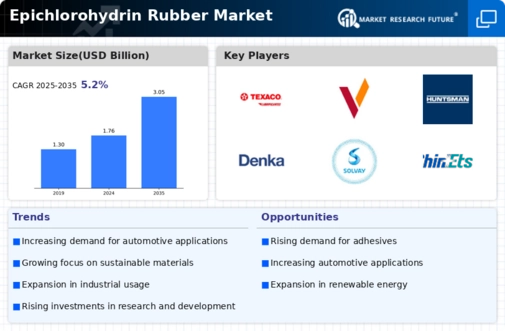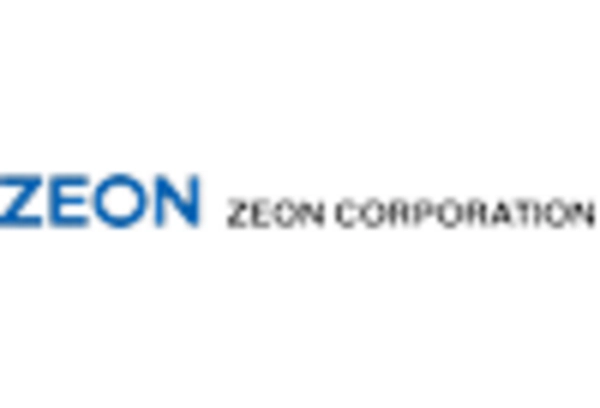Increasing Regulatory Standards
Increasing regulatory standards regarding material safety and environmental impact are driving changes in the Epichlorohydrin Rubber Market. Governments and regulatory bodies are implementing stricter guidelines to ensure that materials used in various applications meet safety and environmental criteria. This trend is pushing manufacturers to adopt higher quality standards and invest in research and development to create compliant products. The market for epichlorohydrin rubber is expected to grow as companies seek to meet these regulations while maintaining performance. The emphasis on sustainability and safety is likely to shape the future of the Epichlorohydrin Rubber Market, as it adapts to meet evolving regulatory demands.
Growth in Renewable Energy Sector
The growth in the renewable energy sector is emerging as a significant driver for the Epichlorohydrin Rubber Market. As the world shifts towards sustainable energy solutions, the demand for materials that can withstand extreme conditions is rising. Epichlorohydrin rubber is increasingly utilized in wind turbine seals and solar panel components due to its durability and resistance to environmental factors. The renewable energy market is projected to expand at a rate of approximately 8% per year, which could lead to a corresponding increase in the demand for epichlorohydrin rubber. This trend indicates a promising future for the Epichlorohydrin Rubber Market, as it aligns with the global push for sustainable energy solutions.
Expansion of the Chemical Industry
The ongoing expansion of the chemical industry serves as a crucial driver for the Epichlorohydrin Rubber Market. With the rise in production capacities and the introduction of innovative chemical processes, the demand for high-performance materials is surging. The chemical sector is expected to witness a growth rate of around 4.5% annually, which directly influences the consumption of epichlorohydrin rubber. This material is favored for its excellent mechanical properties and resistance to various chemicals, making it suitable for applications in seals, gaskets, and hoses. As the chemical industry continues to evolve, the Epichlorohydrin Rubber Market is likely to experience increased demand, driven by the need for reliable and durable materials in diverse applications.
Rising Demand for Specialty Elastomers
The increasing demand for specialty elastomers is a pivotal driver for the Epichlorohydrin Rubber Market. Industries such as automotive, aerospace, and construction are increasingly utilizing these materials due to their superior properties, including resistance to heat, oil, and chemicals. The market for specialty elastomers is projected to grow at a compound annual growth rate of approximately 5.2% over the next few years. This growth is largely attributed to the expanding applications in high-performance environments, where traditional rubber materials may not suffice. As manufacturers seek to enhance product performance and durability, the Epichlorohydrin Rubber Market stands to benefit significantly from this trend, as it offers unique characteristics that meet the stringent requirements of various sectors.
Technological Innovations in Manufacturing
Technological innovations in manufacturing processes are significantly influencing the Epichlorohydrin Rubber Market. Advances in polymerization techniques and compounding methods are enhancing the quality and performance of epichlorohydrin rubber. These innovations not only improve the efficiency of production but also enable the development of customized rubber solutions tailored to specific applications. The market is witnessing a shift towards more automated and precise manufacturing processes, which could lead to a reduction in production costs and an increase in product availability. As manufacturers adopt these technologies, the Epichlorohydrin Rubber Market is likely to experience growth driven by improved product offerings and enhanced operational efficiencies.


















Leave a Comment